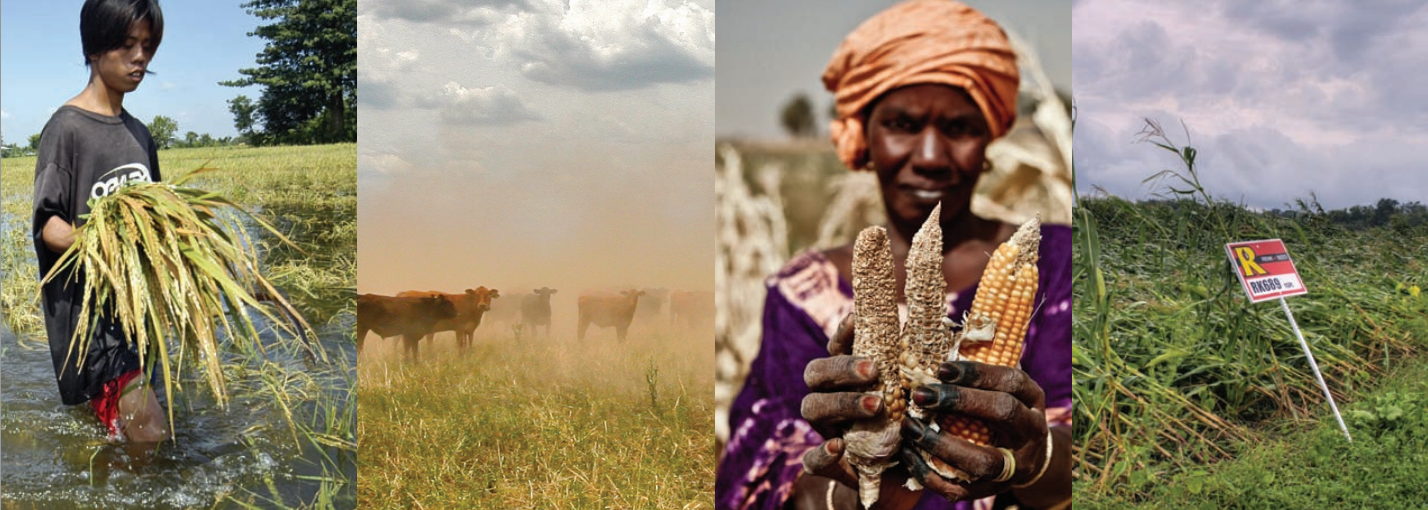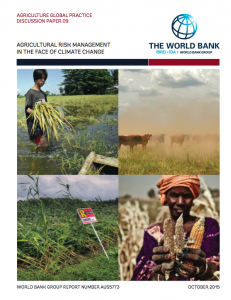FARM-D launches its #9 Ag Discussion Paper on "Agricultural Risk Management in the face of Climate Change". The study seeks to understand the climate change impacts on agricultural risk - how do risks change? - and on ARM - how can agricultural risk managers respond? This response has two elements: First, what role can ARM play in meeting the climate change challenge? Second, how will ARM need to adapt its methodology to the new normal of climate change?
Source: FARM-D
Author:
The report was prepared by a team led by Vikas Choudhary (Senior Economist, GFADR; Task Team Leader) and consisted of Tobias Baedeker (Agricultural Economist, GFADR), Aira Maria Htenas (Operations O ffi cer, GFADR), Jitendra P. Srivastava (Consultant, GFADR), and Alona Gutman (Consultant, GFADR).
Summary:
Climate change is becoming a source of significant additional risks for agriculture and food systems. Climate projections suggest that impacts will include shifting average growing conditions, increase climate and weather variability, and more uncertainty in predicting tomorrow’s climate and weather conditions. Agricultural risk management (ARM) is ideally placed to support stakeholders in building resilience to these increased risks in short and medium term. ARM can also play an important role in the transition to a climate-smarter agriculture system by offering a useful entry point for dialogue. The clear initial focus on the management of shorter term risks and their economic impact can help create a sense of urgency and attract stakeholder involvement that then paves the way for broader discussions around climate-smart agriculture. This study seeks to understand the climate change impacts on agricultural risk – how do risks change? – and on ARM – how can agricultural risk managers respond? This response has two elements: First, what role can ARM play in meeting the climate change challenge? Second, how will ARM need to adapt its methodology to the new normal of climate change?
Chapter one briefly sketches a conceptualization of climate change impacts on agricultural risk. Chapter two assesses the impact of climate change on production risks, including temperature fluctuations, drought events, heavy rainfall (including floods), and other direct weather events, such as cyclones and storms, as well as indirect implications of climate change, such as pests and diseases. Chapter three discusses risk repercussions at the market level. Chapter four focuses on the implications of climate change risks on the enabling environment. Chapter five assesses the implications of climate change impacts for agricultural risk management.

